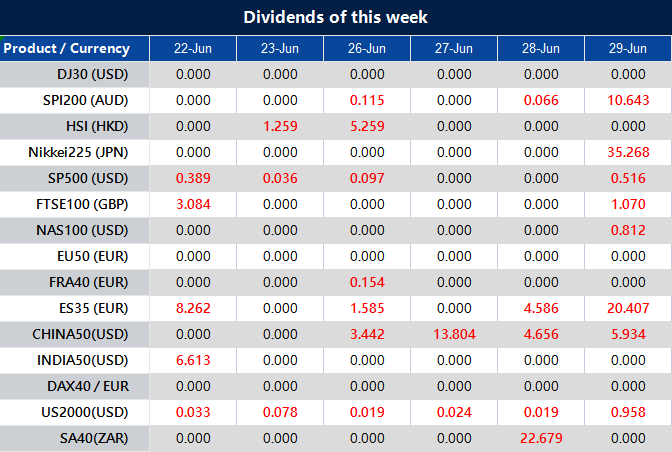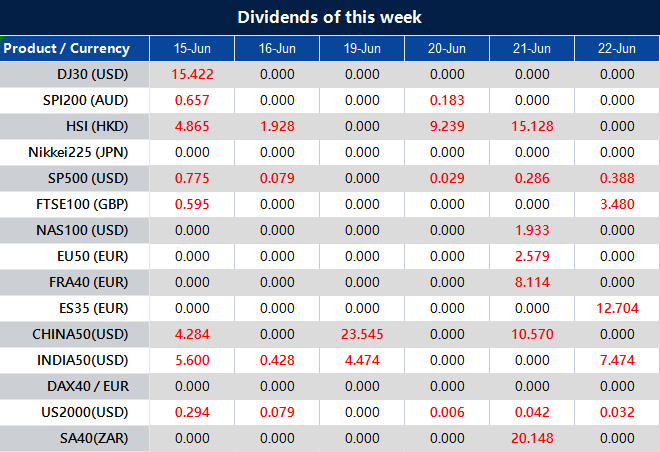The Nasdaq Composite and the S&P 500 ended their three-day losing streaks on Thursday, propelled by renewed investor interest in tech stocks. The Nasdaq, a tech-heavy index, surged by 0.95% to 13,630.61, while the S&P 500 rose 0.37% to 4,381.89, with both indices closing near session highs.
In contrast, the Dow Jones Industrial Average dipped slightly by 0.01% to 33,946.71. The market appeared to be in a state of pause, noted the balance between the bull and bear market sentiments, implying increased volatility and uncertainty ahead.
Investors seized the opportunity to buy major tech stocks that experienced declines earlier in the week. Tesla’s shares, despite being downgraded by a second Wall Street bank, rebounded and closed higher. Amazon’s shares surged by over 4%, Microsoft climbed 1.8%, and Apple reached a new all-time high.
However, concerns loomed in other sectors, as Boeing supplier Spirit AeroSystems saw a significant drop of over 9% due to a halt in production caused by an upcoming worker strike. Additionally, Boeing’s shares fell by over 3%, impacting the Dow’s performance.
Wednesday’s decline in the S&P 500, which marked its worst daily performance in June, was attributed to Federal Reserve Chair Jerome Powell’s statement indicating the likelihood of further interest rate hikes to combat inflation. Powell’s remarks disappointed investors who had hoped the central bank was nearing the end of its tightening cycle.
The Bank of England also raised interest rates by 50 basis points, continuing its streak of consecutive increases. The persistence of central banks worldwide in their inflation-fighting stance, even at the expense of economic growth, contributed to the overall market weakness.

Data by Bloomberg
On Thursday, across all sectors, the market experienced a slight increase of 0.37%. Among the specific sectors, Consumer Discretionary showed the highest gain with a growth of 1.53%, followed by Communication Services with a rise of 1.15%, and Information Technology with an increase of 0.92%. Health Care and Consumer Staples also saw modest gains of 0.65% and 0.51%, respectively.
However, Materials and Industrials sectors both suffered declines, with Materials showing a decrease of 0.29% and Industrials experiencing a larger decline of 0.71%. Financials, Utilities, and Energy sectors all had negative performance as well, with declines of 0.74%, 0.76%, and 1.30% respectively. Real Estate had the largest decline among the sectors, with a decrease of 1.44%.
Major Pair Movement
On Thursday, the oversold dollar index initially declined but later rebounded as Treasury yields rose and the Federal Reserve expressed a more hawkish stance, leading to risk-off flows. Despite the Bank of England’s aggressive 50bp rate hike and signs of high UK inflation, the pound struggled to surpass June’s highs, causing traders to take profits. A similar setback occurred in the EUR/USD pair, which failed to make significant progress above 1.10.
Concerns arose that the BoE and ECB were lagging behind in addressing inflation, potentially causing more widespread damage to the UK and eurozone economies compared to the United States. The dollar experienced a brief decline following higher-than-expected initial jobless claims, but this reversed as continued claims came in below forecast and the Fed Chair emphasized gradual rate hikes to manage inflation without severe economic consequences.
EUR/USD ended with a 0.28% loss, and GBP/USD was down 0.25% despite expectations of a 25bp rate hike. The market is monitoring the 10-day moving average as a potential support level for GBP/USD. If the spread between 2-year gilts and Treasury yields remains positive, there may be a pullback in the pound, enticing new buyers. USD/JPY and other yen crosses reached new highs as the yen weakened due to the contrast between the Bank of Japan’s negative rates and the rising rates of other major central banks.
Technical analysis suggests a bullish close above a certain level is imminent. On Friday, market participants will pay attention to Japanese core CPI, UK retail sales, and flash PMI readings as key event risks.
In summary, the dollar index initially declined but later recovered, driven by rising Treasury yields and a hawkish Federal Reserve. The pound and EUR/USD faced setbacks despite aggressive rate hikes, raising concerns about the central banks’ ability to address inflation effectively.
The dollar experienced a temporary dip after initial jobless claims exceeded expectations but rebounded as continued claims were lower than forecasted. The yen weakened against the dollar and other currencies due to the divergence in interest rate policies among major central banks.
Technical indicators point to potential support and bullish momentum in certain currency pairs. Notable event risks on Friday include Japanese core CPI, UK retail sales, and flash PMI readings.
Picks of the Day Analysis
EUR/USD (4 Hours)
EUR/USD Hits Multi-Month High but Retreats as US Dollar Recovers
The EUR/USD pair reached its highest level in months at 1.1011, but failed to sustain above the 1.1000 mark and corrected to around 1.0950. The US Dollar regained strength, causing the pair to decline. Expectations surrounding the European Central Bank (ECB) were overshadowed by Federal Reserve Chair Powell’s testimony, which hinted at the likelihood of more rate hikes.
Analysts are currently discussing the ECB’s final interest rate decision. Some predict a single hike in July to 3.75%, while others suggest an additional hike in September, raising the rate to 4%. These actions will depend on various factors, primarily the Consumer Price Index.
The upcoming release of the flash Purchasing Managers’ Index (PMI) for June on Friday will hold significance. Projections indicate a potential increase in German Manufacturing PMI to 43.5, while the Service PMI is expected to decline from 57.2 to 56.2. The Eurozone Manufacturing PMI is anticipated to remain at 44.8, with the Service PMI predicted to decrease from 55.1 to 54.5.
On Thursday, US yields rose, providing support to the US Dollar. After three days of decline, the US Dollar Index climbed back above the 102.00 level. Chair Powell reiterated that interest rates are likely to rise in the coming months, with the Federal Reserve’s decision relying on a balance between economic performance and inflation indicators.
Thursday’s data revealed that Initial Jobless Claims reached their highest level since October 2021, but there was a positive note with an increase in Existing Home Sales. The June PMI figures, to be released on Friday, will be closely monitored.

According to technical analysis, the EUR/USD pair experienced a correction move on Thursday and was able to break inside the support and resistance levels and move back to the middle band of the Bollinger Bands. The Relative Strength Index (RSI) is currently at 53, indicating that the EUR/USD is back in a neutral stance for the last day of the week.
Resistance: 1.0965, 1.1003
Support: 1.0920, 1.0890
XAU/USD (4 Hours)
US Dollar Appreciates as XAU/USD Hits Lowest Level in Months
The US Dollar strengthened, causing XAU/USD to reach its lowest point since mid-March. The currency pair, currently trading slightly above the $1,912.78 mark, has declined for four consecutive days. Despite some initial struggles, the USD remained robust, especially after Federal Reserve Chairman Jerome Powell’s testimony on the Semi-Annual Monetary Policy Report before the Senate Banking Committee. Powell indicated that the committee largely supports one or two more rate hikes, while rate cuts are not expected. He acknowledged the persistent nature of inflation but expressed the desire for confidence in its downward trajectory.
Simultaneously, disappointing macroeconomic data in the United States added to concerns and exerted additional pressure on high-yield stocks. Initial Jobless Claims for the week ending June 16 exceeded expectations at 264K, while the Q1 Current Account showed a deficit of $219.3 billion. Additionally, the May Chicago Fed National Activity Index unexpectedly declined to -0.15, and May Existing Home Sales saw a modest 0.2% increase, surpassing the projected -0.6% decrease.

According to technical analysis, the XAU/USD pair is moving lower and created a push to the lower band of the Bollinger Bands. There is potential for a slight upward movement, aiming to reach the middle band. Currently, the Relative Strength Index (RSI) is at 26, indicating that the XAU/USD is in an oversold stance.
Resistance: $1,930, $1,950
Support: $1,912, $1,885
Economic Data
| Currency | Data | Time (GMT + 8) | Forecast |
|---|---|---|---|
| EUR | French Flash Manufacturing PMI | 15:15 | 45.4 |
| EUR | French Flash Services PMI | 15:15 | 52.2 |
| EUR | German Flash Manufacturing PMI | 15:30 | 43.6 |
| EUR | German Flash Services PMI | 15:30 | 56.3 |
| GBP | Flash Manufacturing PMI | 16:00 | 46.9 |
| GBP | Flash Services PMI | 16:00 | 54.8 |
| USD | Flash Manufacturing PMI | 21:45 | 48.6 |
| USD | Flash Services PMI | 21:45 | 53.9 |






















